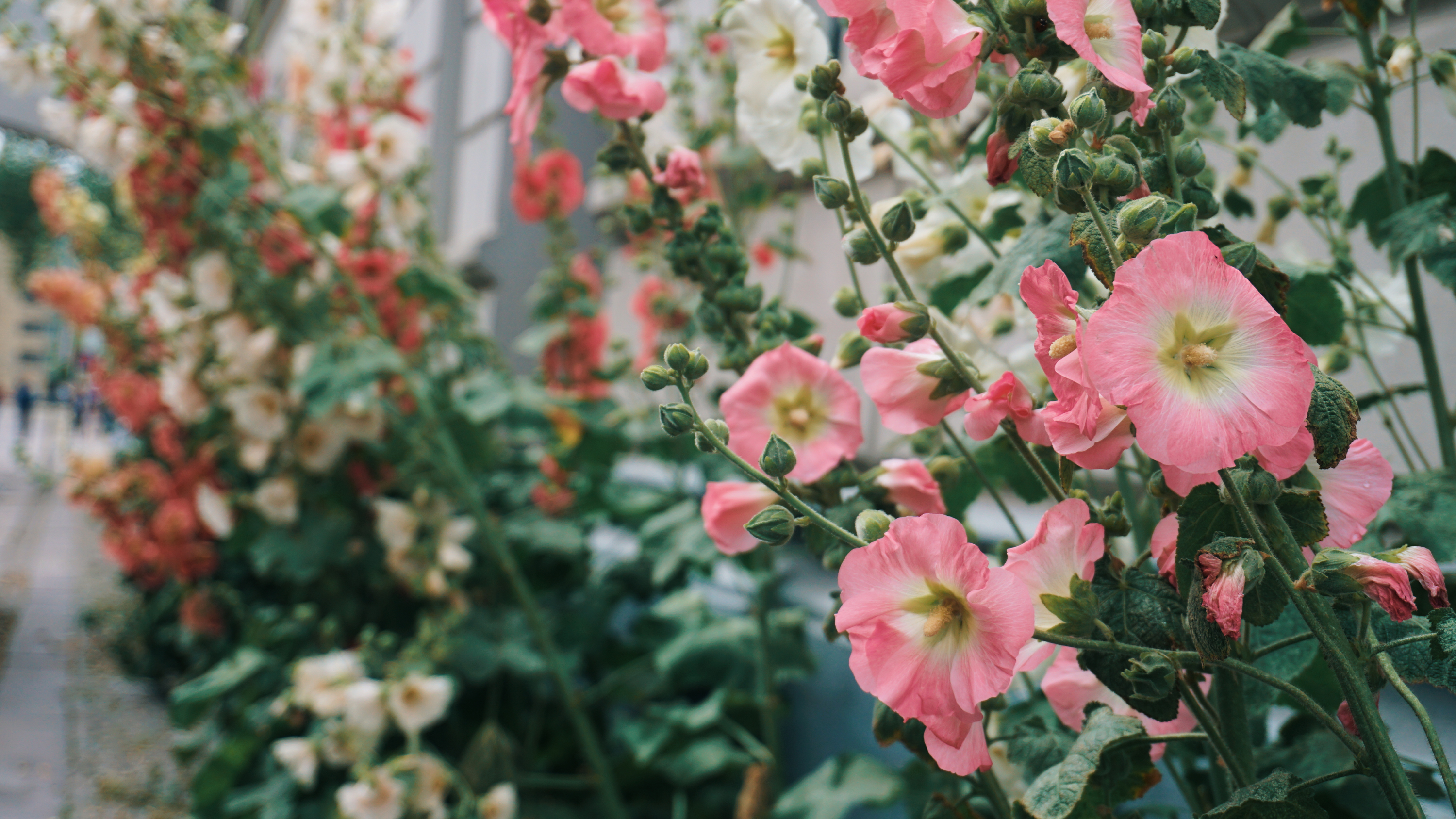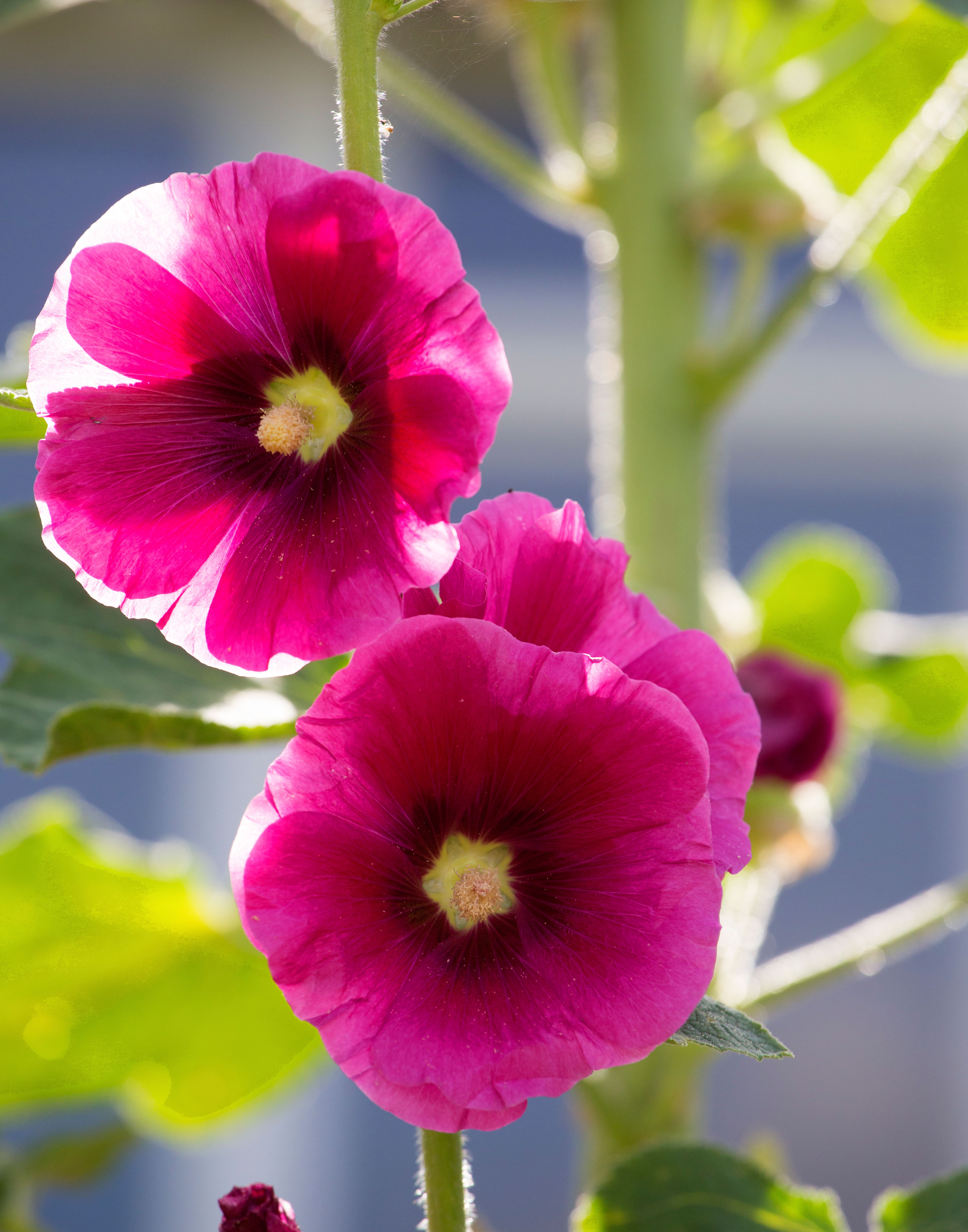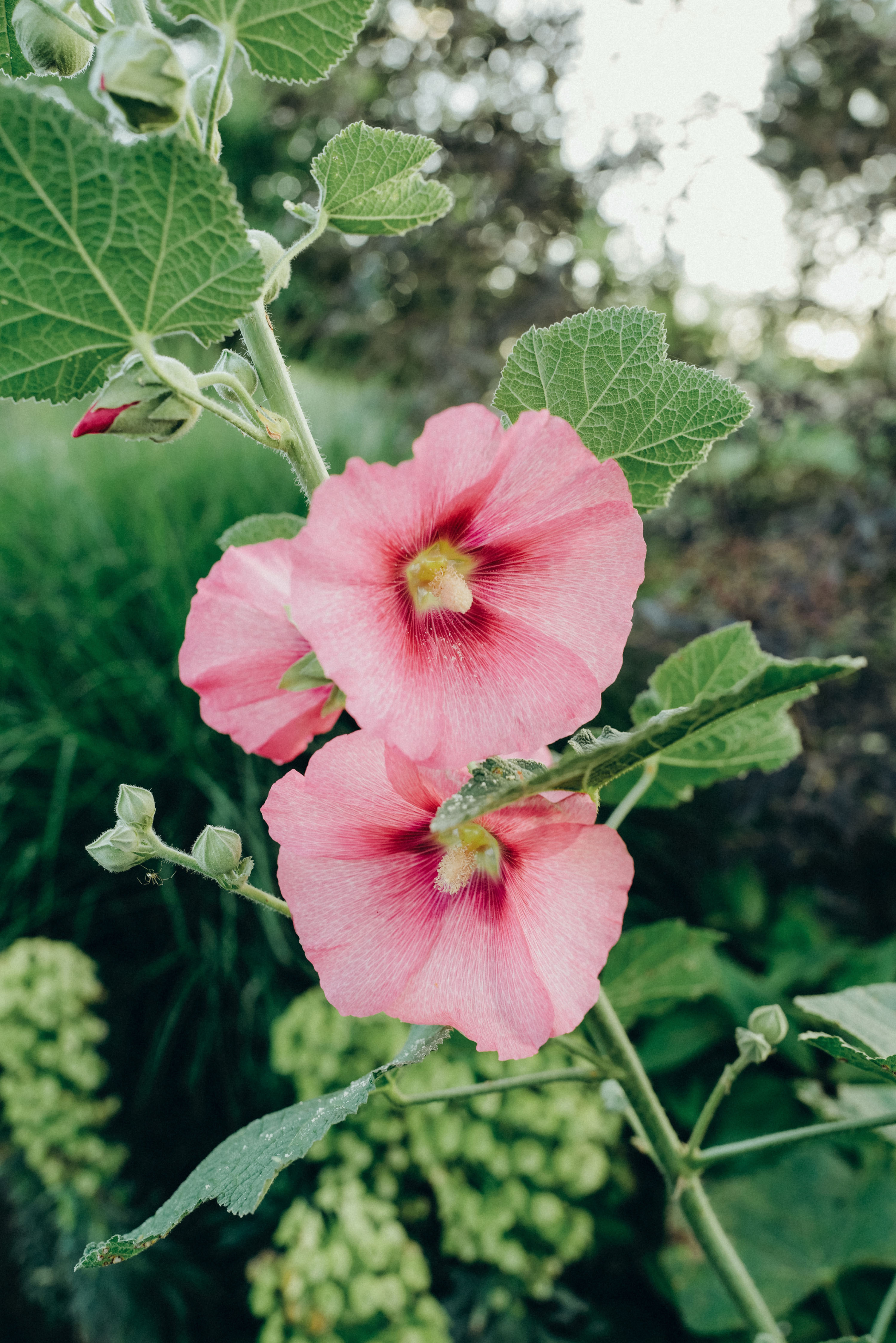Try this solution for rust in hollyhocks – without overloading the garden with chemicals
Rust in hollyhocks is almost inevitable, but you may be able to minimize the impact without strong chemical treatments

Rust in hollyhocks – is it inevitable, and if so, can it be combated? A staple of cottage garden ideas since at least the sixteenth century, the hollyhock or Alcea rosea is in a league of its own when it comes to adding spectacular color and height to a sunny border.
Many hollyhocks will grow over six feet tall, provided they're given plenty of sun and well-draining, chalky soil. All the more frustrating when you then discover the foliage covered in hollyhock rust. Is there anything that can be done about this common hollyhock problem?

First, it's important to understand what causes rust in hollyhocks. The reason may surprise you – the decline of sulphur levels in the air over the centuries. As Sarah Raven explains, 'The cleaner, sulphur-free air that we all now enjoy, however, means that fungus on roses and hollyhocks is more common.'
Sarah's solution for the rust problem? The only guarantee of rust-free hollyhocks, says Sarah, 'is to use fungicides. Bordeaux mixture, a traditional copper sulphate-derived remedy, is not enough to hold rust at bay, you may need to use stronger fungicides.'

If this solution is unappealing, for example if you're trying to create an eco-friendly garden, there may be a way around the rust problem – stop thinking of your hollyhocks as perennials and instead sow them as bi-annuals or even annuals. Monty Don prefers this method: 'Grow them as biennials, sowing fresh seeds each year. I myself have a tray of pots to be planted out now that will not flower until next year.'
This way, rust simply doesn't get enough time to establish in your plants, and eventually, if you sow your hollyhocks continuously every fall, you'll get healthy, flowering plants every year. That's it – no fungicides needed, just a little bit extra sowing and potting.
When is the best time to sow hollyhocks?

Hollyhocks can be sown in fall or spring. April is the perfect time to start them indoors in seedling trays, with the aim of planting them out in June for flowers next year. If planting in the fall, you'll need to do it in September-October, before the first frosts, where they are to flower. If you're lucky, you may get flowers the following spring.
Want more inspiration for your cottage garden planting scheme? Make sure you check out our pick of the best cottage garden plants.
Anna writes about interior design and gardening. Her work has appeared in Homes & Gardens, Livingetc, and many other publications. She is an experienced outdoor and indoor gardener and has a passion for growing roses and Japanese maples in her outside space.
